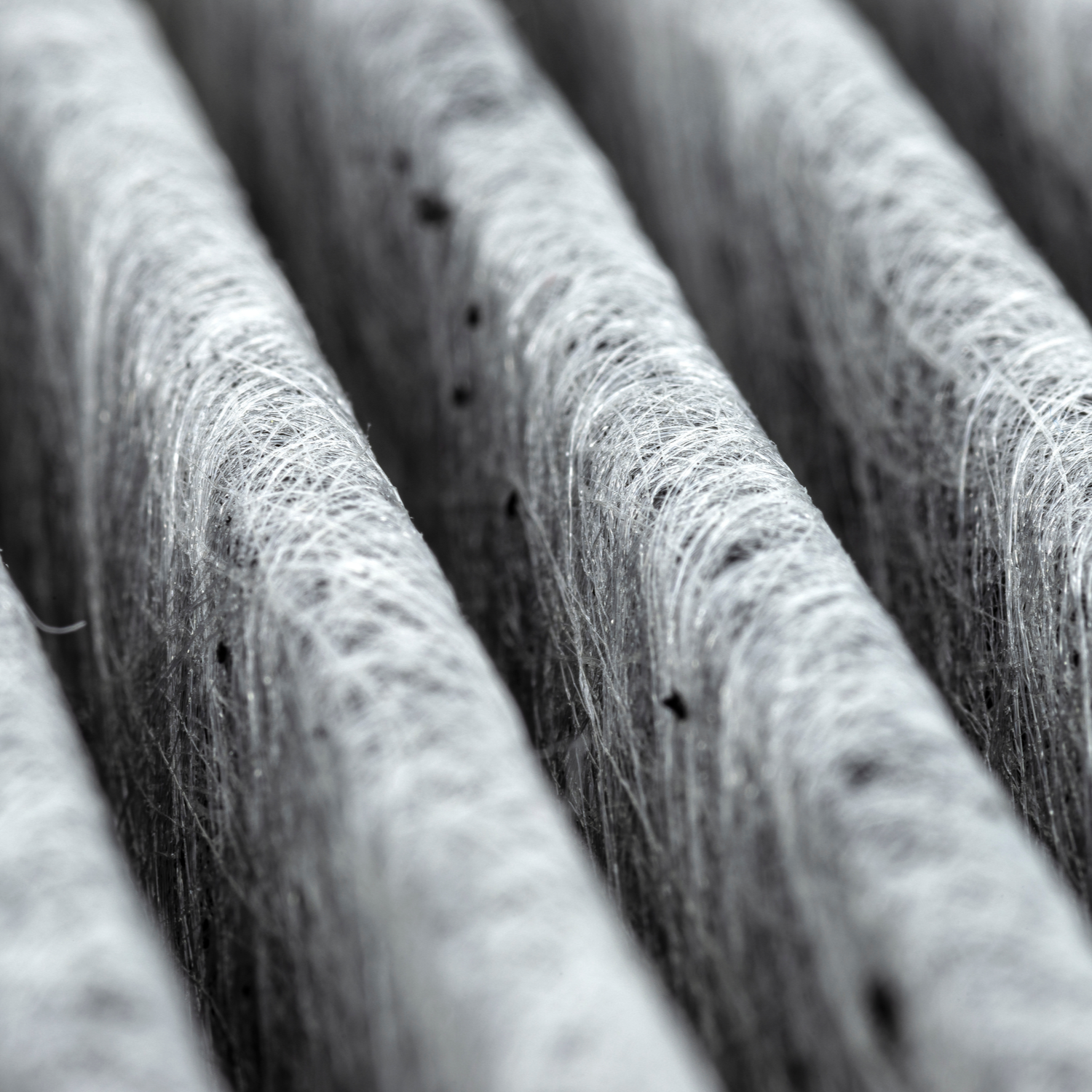The Who, What, Where, & How of Activated Carbon Air Filters
After being out of your home for a short period of time, do you come back inside only to realize there are some unpleasant odors present? If you do, it may be time to add an activated carbon air filter to your home’s HVAC system. Why can using an activated carbon filter make a difference? Let’s explore the 3 W’s (who, what, and where) and the “How” of activated carbon air filters.
What Is an Activated Carbon Air Filter
In addition to the makeup of regular air filters, these filters have a bed of carbon encased in a cloth or mesh-like material in them. Activated carbon air filters are capable of removing the tiny molecules of odors and volatile organic compounds (VOCs) that will pass right through regular air filters.
Activated carbon is a highly porous material that attracts and holds organic chemicals. It is created by burning a carbon substance in a tank at extremely high temperatures (1000°F – 1650°F), without the presence of oxygen, to make a carbon “char”. The “char” is then treated chemically or physically to develop millions of tiny pores inside the carbon. It may sound unbelievable, but one gram of activated carbon will have the surface area of one square kilometer. The more surface area the carbon has, the better it will capture molecules.
How Does an Activated Carbon Filter Work?
Activated carbon air filters remove gases from the air. They do this by a process of adsorption, trapping the gases on the surfaces of the carbon particle. Adsorption happens when a particle gets stuck to a surface of a material, unlike absorption, when a particle gets stuck inside of a material.
As air flows through the air filter, it also passes through the activated carbon. As odor molecules pass through this layer, many of them become trapped on the pores of the activated carbon. It doesn’t work 100%, but it will greatly reduce the number of odor molecules in your home.
Who Throughout History Has Used Carbon Filtration?
The ancient Egyptians are the first people credited for using carbon filtration for medical purposes, using it to purify odors of infections. For several hundreds of years, carbon filters have been used to purify drinking water. Sailors, in particular, would use charred barrels to preserve drinking water on long voyages. During World War 1, carbon filters in gas masks helped protect soldiers from chemical attacks. Today, many water purification systems still use activated carbon to filter organic chemicals and odors from water, as well as activated carbon filters being used to reduce odors.
What to Look for In an Activated Carbon Air Filter
Not all carbon air filters are created equal. These are some important things to look for when you purchase a carbon air filter.
The amount of carbon – The more carbon the filter contains, the better. The filter is effective only for as long as the compounds that it pulls out of the air do not clog up the many surfaces. A thin layer of carbon will last for a shorter period of time.
The thickness of the carbon layer – This is common sense. The more layers of carbon that the air must pass through, the more chance that the odors and VOCs will get stuck to the carbon.
Filter type – Some carbon filters have the carbon encased in a mesh-like material. These filters are really a pre-filter and must be used along side a MERV-rated filter (Minimum Efficiency Reporting Value determines the size of the particles the filter is designed to capture). If the carbon filter is encased inside a standard MERV filter it will take care of both particles and odor/VOCs.
Activated Carbon Filter Pros and Cons
These carbon filters come with some advantages as well as some drawbacks:
Pros
- VOCs filtration of common household items like paints, cleaners, and air fresheners.
- Odor neutralization by capturing these smaller molecules that an ordinary filter can’t filter out.
Cons
- Activated carbon filters are not designed to remove things like common dust and pollen (unless the filter is a 2-in-1 combination of carbon and MERV-rated material).
- Replacement is required more often (every 3 months is recommended) than regular filters. Once the surface spaces have been filled, up the carbon will no longer perform as designed.
Who Should Use Activated Carbon Air Filters?
If you have pets, strong odors, or allow tobacco smoking inside your home, you could benefit from having an activated carbon air filter. These filters will trap gases and odors that would pass right through an ordinary air filter.
A word of warning: activated carbon air filters will not protect you from carbon monoxide (CO). Carbon monoxide will pass right through an activated carbon air filter. It is wise to have a CO monitor on every level of your home.
Activated Carbon Air Filters for Fire & Sewage Restoration
No dwelling is considered safe when smoke damage is involved. Soot particles, both visible and invisible, can remain airborne for over a week after a fire. Both residents of the home and workers restoring the home can inhale these leftover soot particles. Smoke odors can linger, and left untreated, will be absorbed into carpets, walls, and furnishings.
A HEPA air scrubber that uses a activated carbon filter can remove air pollution from the air and at the same time trap the odors and gasses resulting from the fire. Particles settle out of the air at different rates. Visible dust takes about 5 seconds to settle, soot and gasses from a fire can take as long as 10 days. The activated carbon filters used in most restoration air scrubbers contain about 2 pounds of activated carbon (1 lb of activated carbon has the surface capacity of 100 football fields or 534,438 square yards). Many times ozone treatments are used to eliminate fire odors. An activated carbon filter works especially well on removing lingering ozone odors. For use in sewage cleanups, carbon filtration is essential for odor control. The carbon will capture the odors caused by sewage gasses and other noxious odors.
Water Mold Fire Restoration, 800-905-0277uses activated carbon filters in their air scrubbers when repairing the damage caused by fire, sewage, or mold. Our technicians have nationally recognized certifications in fire/sewage restoration and odor control. If mold, a fire, or a sewage backup has damaged your home, please contact us 24/7 – 365 days a year, and we will inspect the damage at no cost to you. You can also contact us via email at help@watermoldfire.net.








